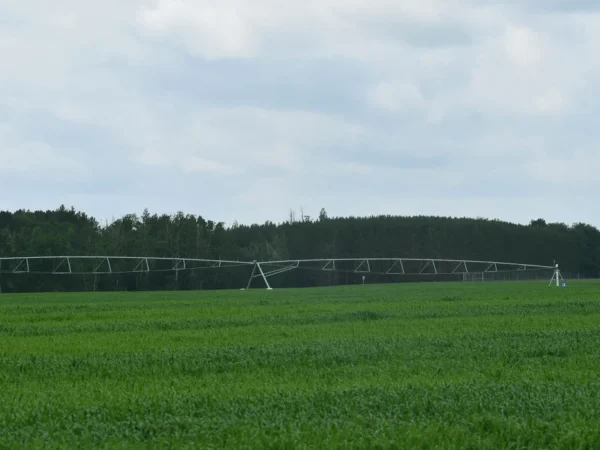
PFAS, short for per- and polyfluoroalkyl substances, are a group of widespread man-made chemicals that don’t break down in the environment or the human body and have been flagged as a major contaminant in sources of water across the country.
Keep up with PFAS-related developments in the Great Lakes area.
Click on the headline to read the full story:
Indiana
- Indiana Research Universities Study PFAS Problem as Feds Move to Limit Contamination — Indiana Environmental Reporter
After years of limited action, the federal government is moving forward with multiple plans to establish regulations limiting toxic contamination from two PFAS chemicals. But the proposed rules could leave many understudied and potentially toxic PFAS chemicals at large in Hoosier air and waterways.
Scientists at Indiana’s research universities are working to fill in data gaps on PFAS chemicals, undertaking multidisciplinary studies to better understand how PFAS chemicals spread and affect human health.
Michigan
- Water scarcity in the Great Lakes State — Wayne State University
Wayne State University graduate student Colleen Linn is studying how rural well owners navigate drinking water concerns related to PFAS. Linn seeks to understand how the state is educating the public on PFAS and how affected residents are making sense of contamination.
Minnesota
- EPA Rapid PFAS Aquatic Toxicity Testing Internship — Society of Environmental Toxicology and Chemistry
A research opportunity is available at the Environmental Protection Agency, Office of Research and Development, Center for Computational Toxicology and Exposure, Great Lakes Toxicology & Ecology Division located in Duluth, Minnesota.
Participants will be engaged in dynamic research aimed at developing and applying analytical methods for quantifying PFAS in challenging sample matrices like small water volumes, small masses of tissues as from fish embryos, and modeling approaches for estimating those concentrations based on physico-chemical properties.
National
The Environmental Protection Agency moved to designate two forever chemicals as hazardous substances, a step that clears the way for quicker cleanup of the toxic compounds. PFOA and PFOS have been voluntarily phased out by U.S. manufacturers but are still in limited use.
Designation as a hazardous substance under the Superfund law doesn’t ban the chemicals. But it requires that releases of PFOA and PFOS into soil or water be reported to federal, state or tribal officials if they meet or exceed certain levels. The EPA could then require cleanups to protect public health and recover cleanup costs.
- EPA finally moves to label some ‘forever chemicals’ as hazardous — Washington Post
The long-awaited move from the Environmental Protection Agency is meant to spark the cleanup of scores of sites defiled by industrial compounds and make the public more aware of their presence.
The Environmental Protection Agency is proposing to remove 12 chemicals identified as per- and polyfluoroalkyl substances from the current list of inert ingredients approved for use in pesticide products to better protect human health and the environment.
While these PFAS are no longer used in any registered pesticide products, EPA determined it is important to remove these 12 chemicals from the list of approved inert ingredients to allow for an updated review of available information for these chemicals to be required, if their future use in pesticide products is requested.
Fred Stone, and his wife Laura, are legacy dairy farmers. The Stone family has owned and operated a dairy in Maine for more than 100 years.
But since November of 2016, every drop of milk – that white gold that’s been a reliable livelihood for generations – is now being poured right down the drain.
Elsie M. Sunderland, an environmental chemist at Harvard studying PFAS for roughly a decade, explains how forever chemicals cause harm, how they might affect our bodies, and what steps individuals can take to mitigate their risks.
- Consumer Reports investigation finds PFAS in food packaging of popular chains — University of Rhode Island
Consumer Reports has released the results of an investigation into which food packaging products from popular chains contain PFAS. Testing revealed that all retailers included in the study had PFAS in at least one of their packaging products, and more than half of the 118 products tested contained evidence of PFAS. Even companies that have previously announced plans to stop using PFAS in their wrappers were found to still be doing so.
- Mapping the PFAS contamination crisis: New data show 2,858 sites in 50 states and two territories — Environment Working Group
The number of U.S. communities confirmed to be contaminated with the highly toxic fluorinated compounds known as PFAS continues to grow at an alarming rate. As of June 2022, 2,858 locations in 50 states and two territories are known to be contaminated. The latest update of this interactive map documents PFAS pollution in public and private water systems.
Catch more news at Great Lakes Now:
PFAS News Roundup: Eliminating “forever chemicals,” reporting obligations broadening
PFAS News Roundup: “Forever Chemicals” waste going unreported, PFAS in rainwater




